#phasmids
Text

A Malayan jungle nymph (Heteropteryx dilatata) in the Citadelle de Besançon's Insectarium, France
by oceanebej2000
#malayan jungle nymph#jungle nymph#stick insects#phasmids#heteropteryx dilatata#heteropteryx#Heteropterygidae#phasmatodea#insecta#arthropoda#captive animal
562 notes
·
View notes
Text
You know the drill, reblog for wider poll range
#entomology#bugs#bug#insect#insects#bugblr#lepidoptera#lepidopterology#ants#bees#mantids#phasmids#beetles#tumblr polls#polls#poll time#one million tags
257 notes
·
View notes
Text
Emily and Wilder posting bc why not (Emily is the spider, Wilder is the stick insect)

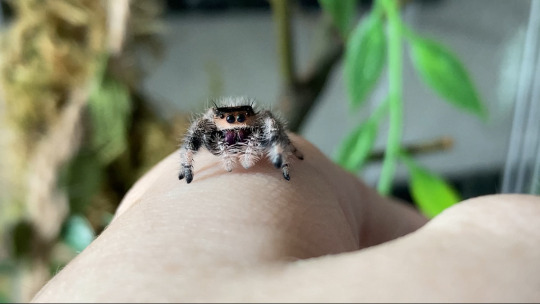

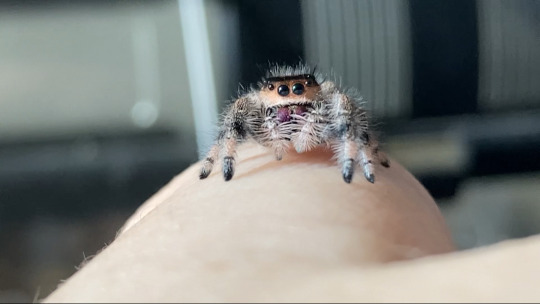
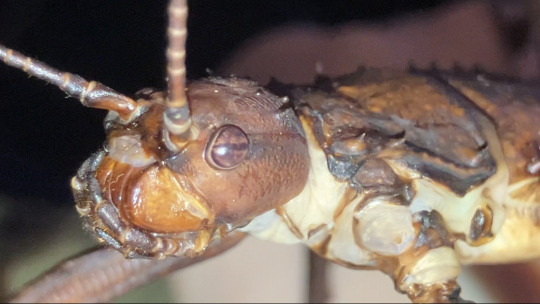
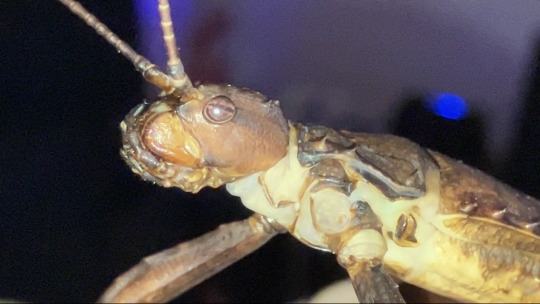
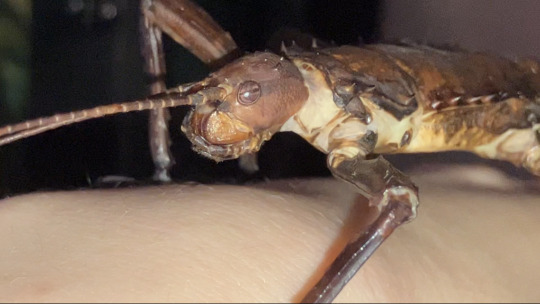

184 notes
·
View notes
Text

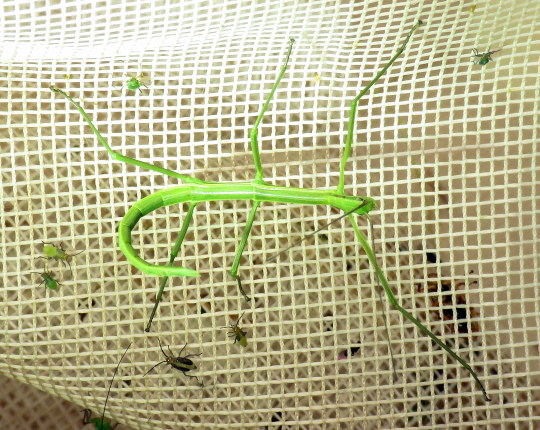
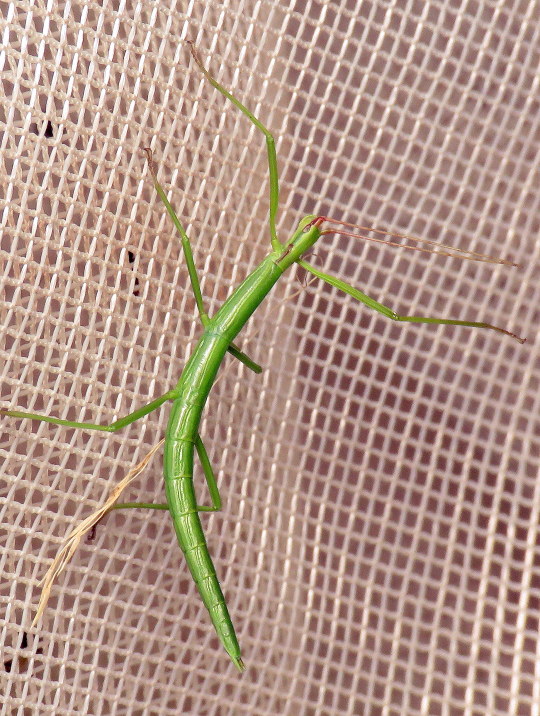
Bug of the Day
We interrupt your regularly scheduled programming for...
BABY
STICK
INSECTS!!!!!!!!!!
Omg, how cute are these things? My sweep nets were full of them the other night. Pretty sure they are Blatchley walkingsticks, Manomera blatchleyi.
#Blatchley walkingstick#walkingstick#stick insects#insect#insects#Manomera blatchleyi#Manomera#Diapheromeridae#phasmida#phasmid#phasmids#baby stick insects!!!#BotD#bug of the day
259 notes
·
View notes
Text
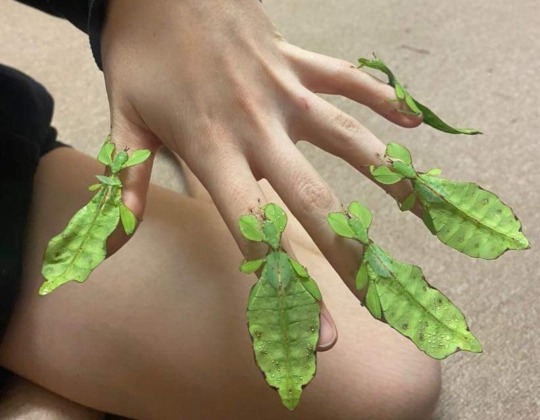
Fresh set 💅
#upl#walking leaf#insect#insects#leaf insect#phasmid#phasmids#bug nails#nails#fresh nails#phylliidae#ento#entomology
27 notes
·
View notes
Text

Okay, I drew even more phasmid eggs 🏺🏺 can’t help myself!
Thinking about printing these as a sticker sheet or an educational postcard- let me know what you think, buds!
#illustration#my work#drawing#art#sketchbook#creature#stippling#natural history#insects#entomology#weird art#weird insects#bugs#phasmid#phasmid eggs#phasmids#leaf insect#stick insect#invertebrates
311 notes
·
View notes
Text
I found this giant stick insect on my buggy after working in the forest. With a length of 28cm, it is the longest insect I’ve ever seen.
8 notes
·
View notes
Text

A French stick insect (Clonopsis gallica) in Brittany, France
by Philippe BOISSEL
#french stick insect#stick insects#phasmids#clonopsis gallica#clonopsis#Bacillidae#phasmatodea#insecta#arthropoda#wildlife: france#wildlife: europe
80 notes
·
View notes
Text




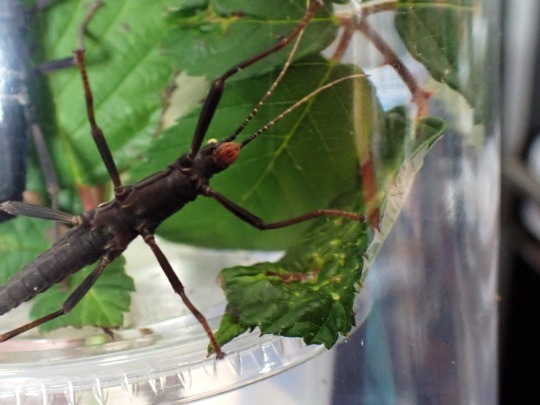





Went to PACNWRS.
#invertebrates#invertiblr#inverts#invert#bugblr#phasmids#snake#snakes#stick insect#stick bug#reptile#pacnwrs#reptile expo
8 notes
·
View notes
Text
Second bug edit 😍😍 this is just what I do now. Isopod edit gonna be fire when it drops 🔥🔥🔥 but for now have Clarice <3 she is that girl, she's still the only one molted
Queen
211 notes
·
View notes
Text
Phasmid keepers are either like "this is my carefully cultivated Megacrania batesii colony, I only feed them the finest Pandanus plants from my own greenhouse and every night I sing a lullaby for them" or "this is my pet stick, she likes bramble"
7 notes
·
View notes
Text
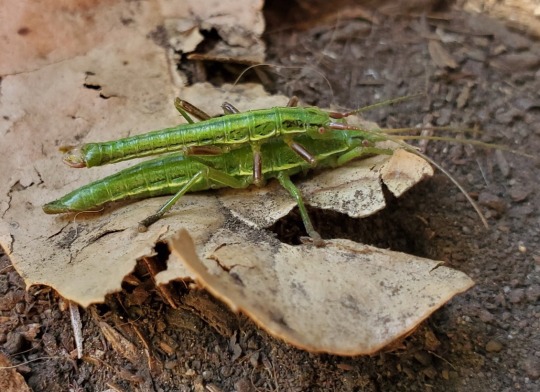

California timema (Timema californicum) in the Santa Cruz Mountains.
Timemas are a type of walking stick found mainly in California but also parts of Nevada, Arizona, Oregon, and Northern Mexico. They form a very ancient lineage of stick insects (order Phasmatodea) and thus have many characteristics that differ from the rest of the order. However, like all other phasmids, they are herbivores and rely on their camouflage to evade predation.
After mating, the male will ride on the female's back and "guard" her for up to 5 days. This is what's going on in the first picture.
Several timema species (but not this one) are parthenogenetic, meaning they only reproduce asexually and are almost entirely female (some species do rarely produce males and no one knows why). Two species have not reproduced sexually for over 1 million years, the longest of any insect!
#timema#california timema#timema californicum#phasmatodea#phasmids#walking stick#stick insect#bugs#nature#nature photography#biodiversity#animals#inaturalist#arthropods#entomology#insect appreciation#insects#parthenogenesis#science facts#nature is weird#bugblr#invertebrates#mount madonna#santa cruz mountains#california#santa cruz#educational#interesting
9 notes
·
View notes
Text
November 14th, 2023

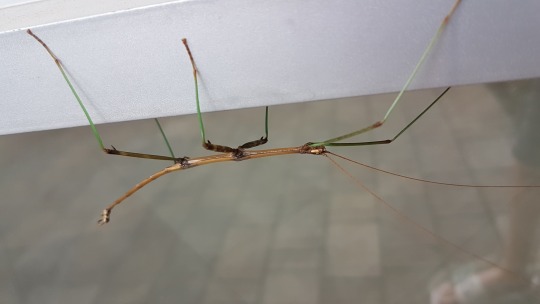
Common Walkingstick (Diapheromera femorata)
Distribution: Found throughout most of North America; range includes all of the USA, plus southern-central Canada.
Habitat: Deciduous forests where their favourite trees are abundant; also found in agricultural fields, urban gardens and residential yards.
Diet: Herbivorous generalist; adults are leaf skeletonisers with a preference for oak and hazelnut trees; nymphs feed on trees, but also shrubs such as sweet fern, blueberry, strawberry and juneberry.
Description: Walkingsticks are phasmids, and have particularly good camouflage skills in order to avoid predation. Their ability to act like branches is vital to their survival, as they're not particularly quick and don't have wings. Due to their lack of wings, walkingsticks tend to spend most of their life on the same tree, rarely dispersing from tree to tree. Still, clusters of these sentient sticks do still occasionally form, which can cause significant defoliation to their host tree.
Females deposit their eggs in the late summer, dropping eggs one at a time onto the ground, where they will overwinter beneath the leaf litter. Nymphs hatch mostly at night, when humidity reaches at least 80%; this extra lubrication makes it easier for them to crawl out of their eggs.
(Images by Distant Hill Gardens
5 notes
·
View notes
Text



Phasmid egg stickers are a reality!
#illustration#my work#drawing#art#creature#stippling#natural history#bug art#bug stickers#bugs#insect eggs#insect#insects#phasmids#phasmid eggs#phasmid#stickbug eggs#stick insect#entomology#entomology sticker#entomology sticker sheet#sticker sheet#weird art#weird stickers#stickers#biologic stickers#biology art#entomology art#matte stickers
7 notes
·
View notes